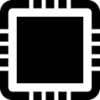Students in a research-based master’s or doctoral program will work with a faculty supervisor through their degree. Visit our Engineering Research and Supervisors page to find resources to help you learn more about finding the right supervisor for your graduate program and how to contact them.
Research Areas and Themes
The artificial intelligence and machine learning research area involves theory, methods, operations and systems design that concern the perception, recognition and analysis of patterns of objects (visual, textual, numeric or multimedia) and building systems, machines and programs that exhibit adaptable and intelligent behaviour. There are several sub-areas in artificial intelligence and machine learning such as sensors management and perception, affective computing, activity recognition, data mining and knowledge discovery, cognitive robotics, cooperative intelligent systems, biometrics, video and image analysis, natural speech recognition, human-machine interaction and applications. These areas and sub-areas are the cornerstone of many applications ranging from intelligent transportation systems to service robotics, from speech transcription to document classification and clustering, from computer vision to emotion recognition, and from prediction of commodities to intelligent power engineering.
The main thrust in this area is the application of electromagnetics to a wide range of engineering systems and devices including antennas, circuits and systems over the RF/microwave, millimeter-wave/THz, and optical range of frequencies. Research and teaching in this area cover underlying theoretical development and computational methods for investigation and exploration of novel engineered materials and device/system concepts, computational methods for simulation and design optimization, and measurement and characterization methods.
The biomedical research area covers several sub-areas across the department including nanotechnology, silicon devices and integrated circuits, circuits and systems, computer software, communications and information systems, pattern analysis and machine intelligence, systems and controls, wireless communications, and antennas, microwaves and wave optics.
Professors Li, Dongging and Carolyn Ren conduct advanced research in microfluidics and are actively involved with research in engineering. Professor F-S Lien’s research involves Computational Fluid Dynamics (CFD) and turbulence models for 3D flows.
The research area of circuits and systems deals with the theory, analysis and design of interconnected devices and components. Typically the circuits and systems of interest are targeted at signal processing and communications applications. Due to the complexity of most circuits and systems, computer methods and algorithms play a key role in the simulation, synthesis, layout, verification and testing of circuits and systems. Researchers and graduate students have access to current state-of-the-art circuit design and simulation tools. In addition, graduate students are encouraged to design, fabricate and test their circuits in commercially available integrated circuit processes.
The research area of Communications and Information Systems (CIS) focuses on challenging, relevant problems in communications science and information systems. Research sub-areas of CIS professors span all aspects of communications and information systems from theory to practice, including information theory, stochastic processes, statistical signal processing, coding and network codes, multimedia compression, pseudorandom sequences, cryptography, signal and image processing, digital communications, spread spectrum communications, wireless communications, wireless/Internet networking, broadband networks, optical networks, cooperative and cognitive networks, multiple-input multiple-output (MIMO) systems, space-time communications, wireless security, and communication security.
The computer hardware research area involves the design, analysis and modeling of complex systems on a chip, including gates, architectures, and networks. Sub-areas include: energy/reliability/security-aware very-large-scale integration (VLSI) systems, configurable computing, distributed computing, autonomic computing, IC design for low power/voltage, co-operative intelligent system design, computer architecture, 3D IC design, design automation, distributed real time systems, cyber-physical/hybrid systems, embedded and real-time processors/systems, hardware and software co-design methodologies, formal verification methodologies, models of computation, cryptographic hardware and embedded systems, side channel attacks, computer arithmetic and computer/network security.
Software systems are critical in today's civic infrastructure; software is responsible for a great number of recent technological advances, ranging from embedded systems up to Google-scale Internet infrastructure. Research in computer software aims to develop new techniques for designing and implementing software systems.
Nanotechnology is the study of manipulating matter on an atomic and molecular scale. Generally, nanotechnology deals with developing materials, devices or other structure processing at least one dimension sized from 1 to 100 nanometers. At these scales, quantum mechanical effects become predominant and play an important role in determining material properties and device performance. Nanotechnology is considered a key technology for the future. Nanotechnology has prevailed in many scientific and technological research areas because of the significant advantages of miniaturization—less materials, more compact, less energy consumption, novel functionalities and unprecedented performance, etc.
Quantum information has emerged as both a fundamental science and a progenitor of new technological platform in communication, computation, imaging/sensing, metrology and lithography. Six departments at the University of Waterloo including this department are in collaboration with the Institute for Quantum Computing (IQC) offering opportunities for researchers and graduate students in the area of quantum information.
The Power and Energy Systems Group is one of the largest power-research groups in North America covering a wide range expertise - practically all areas of power engineering. The main research sub-areas of concentration are: power systems (including economics, operations, stability, control, dynamics, etc.), power distribution systems, power quality, high voltage engineering, electrical insulation, applications into biotechnology and nanotechnology, power electronics, and drives. In recent years, faculty have been extensively involved in research on integration of distributed generation resources, particularly renewable, with the grid, and various issues on smart grids.
The Silicon Devices and Integrated Circuits (SiDIC) area covers several sub-areas including semiconductor materials and processing, modelling and simulation of electronic devices, fabrication technologies for electronic devices, and integrated circuits. The areas of applications are diverse and include high performance IC technologies, large area electronics digital medical imaging applications, flexible electronics, display applications, and photovoltaic energy conversion.
In the area of systems control, the objective is to make a physical system act in a desired manner through the use of an automatic feedback controller; for example, an autopilot (the controller) is used on an aircraft to maintain speed, altitude and direction. Feedback is a fundamental concept in engineering, and systems control harnesses its power to achieve desired system behaviours.
Very Large Scale Integration (VLSI) deals with problems encountered when combining thousands of electronic devices into a single integrated circuit. The field encompasses all major aspects of design and implementation of VLSI systems including systems specifications, design partitioning, reliability and yield. Within the field, graduate students work closely with faculty members to explore research problems using computer aided tools ranging from three-dimensional field solvers to fully integrated design flows. Typically research is verified through design and fabrication of integrated circuits implemented in nano-meter complementary metal–oxide–semiconductor (CMOS) processes. Much of the work is supported by local and international companies.
Wireless communications is a highly technical research area involving all aspects of transmitting and receiving information over the wireless spectrum. Research includes the study of wireless communication channel effects and modeling (e.g., multipath effect, Doppler effect, fading, shadowing, frequency selectivity), the study and design of modulation techniques effective in challenging wireless environments, multi-antenna techniques (i.e., MIMO - Multiple Input Multiple Output) for wireless channels, error control coding techniques suitable for wireless channels, multiple access techniques, and mobility and resource management in wireless networks.






